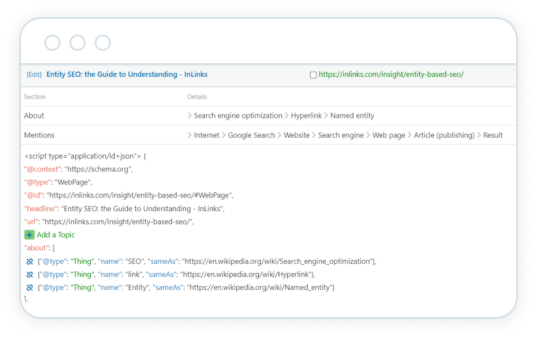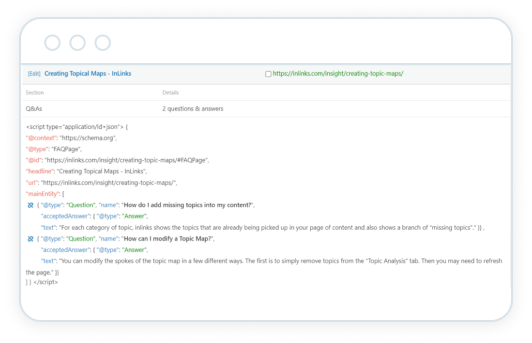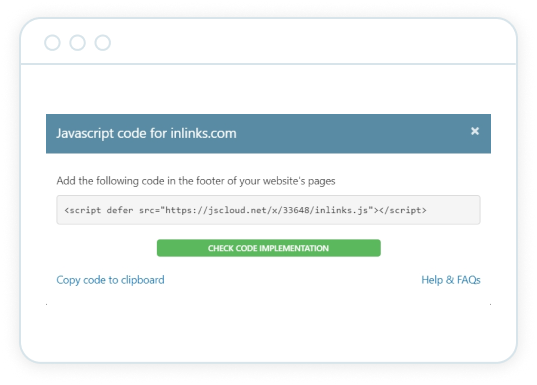
Go beyond basic content optimization
Optimization in the semantic web doesn’t end at the keyword level. Enhance your SEO efforts by presenting your content in the machine-readable format search engines understand.
Our schema markup tool automatically converts the information on your page into structured markup in the recommended JSON-LD format. Adding this structured data to your content helps to:
- Give context to the data on your page
- Improve your chances of ranking in prominent search positions
- Improve click-through rates on your website

What Our Users Are Saying




What Our Users Are Saying





Start describing your content clearly to Google
With Webpage schema, you can show the search engine what your page is all about. InLinks automatically adds “about” and “mentions” properties to your content once you associate it with a target topic.
These properties describe the authority topic of your page and the related secondary topics it mentions. To further delineate the exact meaning of your content, InLinks uses the SameAs tag to connect it to a trusted source, like a corresponding Wikipedia page.
This clear interpretation helps the search engine grasp the relationship between different elements on your page. So, it can reward you with better visibility on the SERPs and in the knowledge graph.
Snatch the coveted featured snippets position with FAQ schema
Show search engines the accepted answer for searchers’ questions by adding FAQ schema markup. InLinks will automatically generate the correct schema code once it finds questions in multiple heading tags.
With FAQ schema markup explicitly showing the accepted answer, you can gain enhanced SERP positions like featured snippets and voice search responses. Not only will it increase your CTR, but you’ll be helping Google deliver a better search experience to visitors.

Deploy JSON-LD markup codes at scale
No need to tag your content one after the other or copy and paste anything onto every single page. InLinks works in the background and automatically injects the schema code into the head section of your HTML page. Just associate each page to a target topic, and our NLP algorithm will handle the rest.
Once you add and validate our one line of JavaScript code in your website footer, InLinks will push the structured data live onto your website.

Watch our tool in action
InLinks generates bug-free and valid schema markup codes with their complete properties. Watch our video to see how our schema markup tool works.
Frequently Asked Questions
How many types of schema does InLinks generate?
We currently create two of the most important kinds of schema: Webpage and FAQ schema markup. Webpage schema improves Google’s understanding of the underlying concepts of your content, while FAQ schema helps you gain featured snippets position. We have other schema markup types in the works.
Can I edit the schema markup codes?
No, we do not allow you to edit the raw code to avoid invalidating it. If you wish to edit how your content is present via structured data, edit the content on your website. InLinks will reanalyze your content to reflect the change.
How can I test/validate InLinks schema?
You can test our schema code using Google’s Rich Results Tool or the Schema Markup Validator at Schema.org.
How many languages does InLinks support?
English, French, Spanish, Dutch, German, Italian, Portuguese, and Polish. 8 so far, and hopefully, more to come.
Let's Talk
Talk to us or leave a message using the blue chat button. You can also book a Demo:
COMPANY
SEO TOOLS
HELP & COMMUNITY
LANGUAGES
FOLLOW US
Let’s Talk!
Give us a call or drop us a message using the blue chat icon.
You may also Request a Demo
InLinks UK | Dixon JonesT: +441438940145 InLinks France | Fred Laurent
T: +33 617 993 221

